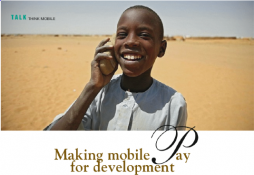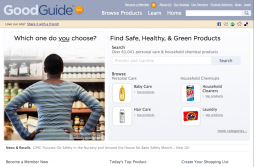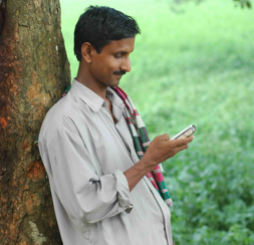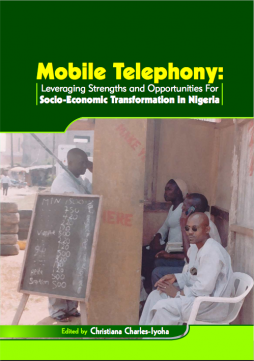Market Access and Information
Posted by LeighJaschke on Jul 01, 2009
Mobile phones use and social network development among small Malaysian retailers data sheet 2187 Views
Author:
Julsrud, Tom E.; Wong, Andrew; Roldan, Grace; Rohnes, Mette
Abstract:
In much literature on social capital, it has been a widely held assertion that networks of informal relations is beneficial for the development of local regions as well as larger nations (Fukuyama 1995; Putnam 2000; Woolcock 2001). Regional areas with a well developed network of informal connections and communities are believed to produce benefits leading to increased regional competitiveness, economic growth and prosperity. The last decade mobile communication tools have rapidly saturated several emerging markets in Asia and Africa (Donner 2008; Kumar and Thomas 2006). As a tool that is mainly used to connect individuals across space and time; mobile phones appears to have qualities that can spur social capital development for private persons as well as enterprises and larger regions. In line with this, some recent studies have found support the argument that mobile phones is beneficial for regional and local development (Goodman 2007; Jensen 2007). Still, others has been more reluctant and critical towards the “network effect” coming out of mobile phone usage among small enterprises (Chowdhury 2006) and some studies has found that private ties, rather than business relations are strengthened through the implementation of mobile phones (Donner 2004).
This paper addresses the question of mobile telephony usage and local development by looking at how mobile voice dialogues and SMS (text messages on mobile phones) are used by small enterprises in Malaysia. More explicitly, the study explores the kind of relations that are supported by these tools during the work day, as well as their physical proximity and perceived importance for business development. The study is based on in-depth studies of 12 small enterprises (between 5 and 20 employees) operating within agriculture, retail and financial services in the Selangor district. The paper presents initial findings, indicating differences in mobile phone usage between the three sectors, and highlighting general trends cutting across all sectors. Methodologically the study draws on quantitative social network techniques (to map mobile calls and SMS messages during a week), as well as qualitative interviews with managers and a sample of employees in the enterprises.
Posted by LeighJaschke on Jun 26, 2009
ATMosphere: A System for ATM Microdeposit Services in Rural Contexts data sheet 1622 Views
Author:
Paik, Michael; Subramanian, Lakshminarayanan
Abstract:
This paper describes strategies to lower the cost
of providing Automated Teller Machine microdeposit services
in rural contexts. Microdeposits represent a growing market
in the developing world, but the cost of running a
conventional ATM network is prohibitive due to the capital
investment required to deploy networks and terminals.
Our novel contributions are to use the Short Message
Service (SMS) over high-penetration GSM cellular networks
in conjunction with a system using location awareness to
intelligently distribute available balances among machines.
This allows us to provide high levels of service while
simultaneously reducing risk to the financial institution and
lowering per-transaction cost.
Using a simulation of ATM usage patterns and
distributions, our primary results under our model are: (1)
transaction cost per user per year can be optimized to less
than USD 0.18 given an SMS loss rate of approximately 10%
while (2) customer withdrawal success rate can be maintained
at approximately 98% with (3) a maximum of 5% of funds on
deposit available in cash in ATMs at any given time.
These results make wide deployment of rural ATM services
by financial institutions feasible and economically viable in
the near term using existing commodity tech
Posted by LeighJaschke on Jun 25, 2009
A review of the research on mobile used by micro and small enterprises (MSEs) data sheet 2889 Views
Author:
Donner, Jonathan; Escobari, Marcela
Abstract:
This paper offers a systematic review of 14 studies
of the use of mobile telephony by micro and small enterprises
(MSEs) in the developing world, detailing findings about changes
to enterprises’ internal processes and external relationships, and
findings about mobile use vs. traditional landline use. Results
suggest that there is currently more evidence for the benefits of
mobile use accruing mostly (but not exclusively) to existing MSEs
rather than new MSEs, in ways that amplify existing material
and informational flows rather than transform them. The review
presents a more complete picture of mobile use by MSEs than
was previously available to ICTD researchers, and identifies
priorities for future research, including comparisons of the
impact of mobile use across subsectors of MSEs and assessments
of use of advanced services such as mobile banking and mobile commerce.
Posted by LeighJaschke on Jun 19, 2009
Sizing The Business Potential of mHealth in the Global South data sheet 1744 Views
Abstract:
This report provides professionals from across sectors and industries with methodologies for sizing up the market opportunity for mHealth solutions in the Global South. The report was prepared after thorough research for available data and identifies gaps where subject-matter experts' input is needed. Specific examples of data and the healthcare expenditures from Turkey, Vietnam, and South Africa are used to demonstrate the methodologies.
Developing credible market size requires approaches that maximize the use of imperfect data, including additional inputs from experts in the health field in the developing world. To move toward the development of a credible market sizing, this report identifies the available secondary data and provides three possible approaches for assessing market size: Top down from health budgets with needs-based segmentation, top down from health ICT or eHealth budgets, and bottom-up from healthcare program cost and volume of potential data. In addition to detailed step-by step explanations, the report also provides an evaluation of each of the methodologies and comments on the quality of their results.
Posted by KatrinVerclas on Dec 11, 2008
CGAP, one of the leading organizations conducting research and providing leadership in the mobile banking space in the developing world, is holding a live webcast today from 2-5 pm Eastern Time (-5 GMT). Here are the details:
Mobile Banking for Poor People: Pioneer Perspectives
a CGAP roundtable and webinar
Dec. 11, 2008 | 2:00pm – 5:00pm
World Bank Headquarters, Washington DC | online at http://technology.cgap.org
By the end of 2008, the UN says there will be four billion mobile phone connections globally. Millions of air-time resellers and retail agents in developing countries make it possible to distribute financial services at far lower cost than through traditional channels.
Posted by on Jan 01, 1970
n/a
Posted by on Jan 01, 1970
n/a
Posted by KatrinVerclas on Oct 25, 2008
This article, in a slightly revised version, was published by Orascom's TALK Magazine, Fall 2008.
There has been much talk of late about mobile financial services as a way to lift millions of people worldwide out of poverty. A recent article in The Guardian called mobile banking in developing countries “potentially revolutionary.” The advent of mobile financial services promises to bring many more poor people into an economic mainstream where safer and less costly financial services (such as person-to-person payments and remittances) are delivered over the cell phone. But is this promise anywhere near reality?
Transferring money via mobile phones can save days of travel for workers in cities who send money home to families in rural villages. Mobile payments are also often cheaper and more secure than relying on informal brokers or carrying cash personally, and they have the potential to change markets by making small business-to-business transactions immediate and more reliable.
Posted by KatrinVerclas on Sep 11, 2008
We have written a lot about providing consumers with just-in-tine information about products on their mobile. Shoppers can receive an SMS about sustainable fish or climate impact of products already. This is the idea of the new GoodGuide, a new start-up spun out of the University of Berkeley. Good Guide provides 'green' consumer information for shoppers who want to buy products in line with their values.
The brainchild of Dara O'Rourke, an enterprising UC Berkely professor, Good Guide came online yesterday. The 61,000 products already in the database contain hundreds of datapoints. They are organized into three categories: health, social and environmental impact. Currently, there are two product types only: personal care and household chemicals. Food, electronics, toys, and apparel are to be added over the next several months.
Posted by CorinneRamey on Apr 28, 2008
Imagine you're in Bangladesh and you want to buy a cow. You pull your mobile phone out of your pocket and start sending text messages to 3838, the shortcode for CellBazaar, a mobile phone marketplace which some have called the "Craigslist of Bangladesh." You look through the relevant ads and look at the ages, locations, and number of teeth of the 187 cows that are currently for sale. After another SMS, you are connected with the phone number of the the seller, ready to make your new purchase. What could have taken days to coordinate was made easy by a series of simple text messages.
Kamal Quadir, the founder of CellBazaar, sat down with MobileActive for an interview. Quadir said that he first got the idea for CellBazaar when he was a graduate student at MIT. "I was surrounded by technologically sophisticated people," said Quadir, who is originally from Bangladesh.
Posted by CorinneRamey on Feb 29, 2008
The brightly-colored umbrellas of mobile phone vendors, selling top-up airtime and the use of mobile phones for calls, dot the landscape of urban and rural Nigeria. However, says a new book on mobile phones in Nigeria, cell phones haven't just visually changed the landscape of Africa's most populous country, but have transformed the country economically, socially, and democratically as well.




